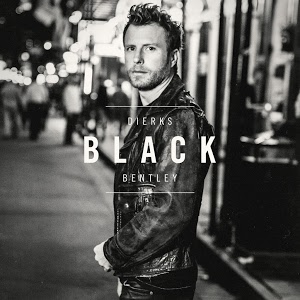So… how do you write a song with a negative-sounding title, and make it a positive, sexy love song? Well, you write it like Dierks Bentley’s “Black.”
Let’s look at some of the songwriting lessons that make “Black” a cut/able song.
____________________
To BE a pro, you need to THINK like a pro, and this FREE ebook will help transform your thinking, your songwriting, and your success. Get it today!
_________________________________
Ok, I know what you may be thinking. “Didn’t Dierks write that song himself?” Well… yes. He wrote the song with Ross Copperman and Ashley Gorley. But that doesn’t change the fact that it still made the record- and the radio.
I’m sure Dierks doesn’t cut everything he writes. So “Black” still had to compete- even if was just against other songs he wrote. There are valuable songwriting lessons to be learned here. So let’s look at a few.
The song puts a positive spin on a negative phrase.
If a cowriter brought in the phrase “make the world go black,” where would your mind immediately go? Probably somewhere dark. (ba-dum-dum!) That phrase has a negative connotation- slipping into oblivion, passing out, and even dying.
A potential angle would be something like “I want to stop thinking about her blue eyes, that red dress… I’m gonna sit here and drink till the world goes black.” And that could work just fine. It could be pretty cool. But ya know what?
A song with a positive spin… usually gets more spins.
The writers went to the next level, did the extra work, and took the song to a positive, sexy place. Much more commercial!

The song bridges the confusion gap.
“Black” has a twisty idea (the world going black = good instead of bad). This means the listener might get lost. So Bentley and crew just came right out and said what they mean in the bridge: “I don’t wanna see a thing, I just wanna feel your touch.” They even said it twice to make sure you got it! This makes it clear that it’s not so much that Dierks doesn’t want to see her, but that he really wants to focus on another of his senses – the sense of touch.
If you confuse, you lose.
This song bridges that gap, so the listener is less likely to be confused.
The song’s images are right on point.
The imagery in the song points to either “black” (the dress on the floor) or the sense of touch (“brush me with your hair,” “find your fingertips, trace them back to your lips”). Is the “brush” in “brush me with your hair” a paintbrush-with-black-paint reference? I like to think so. And some of the images pull double-spins. “Heart attack” and “put me flat on my back” usually mean bad things. Here, they mean very good things!
These are a few of the elements that make “Black” a cut/able song. If you want YOUR songs to be more “cut/able” (able to be cut) then you should definitely check out my new, expanded and upgraded version of “Cut/able: Lessons In Market Smart Songwriting.” Its five powerful lessons will help you write songs that artists want to sing, radio wants to play, and listeners want to hear! CLICK HERE TO WRITE CUT/ABLE SONGS.
God Bless and Enjoy the Journey,
Brent
Brent Baxter is a hit songwriter with cuts by Alan Jackson, Randy Travis, Lady Antebellum, Joe Nichols, Gord Bamford, Ruthie Collins, Ray Stevens, and more. He’s written a top 5 hit in the US and a #1 in Canada… so far.






Great article. It’s a very cool way to turn around preconceived meanings. I believe the song concept was also inspired by his wife, Cassidy Black.
I believe it was, too! But I just wasn’t sure what lesson songwriters could draw from that… Maybe something about how it’s smart to write songs for your wife!